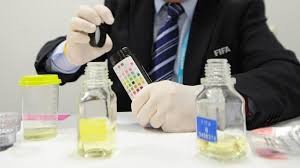By David Owen
December 14 – Footballers in Brazil were again more likely to pick up anti-doping rule violations (ADRVs) than those in any other country, according to statistics relating to samples collected in 2018 made public this month by the World Anti-Doping Agency (WADA).
Of 52 football-related analytical ADRVs during what was a FIFA World Cup year, 10 – or just under 20% – related to Brazil. This was well ahead of Saudi Arabia in second place with four. This was followed in turn by Greece, Guatemala, Iran and Italy with three each.
In spite of the time-lag, this is not a complete picture: Of the 125 positive test results related to football, 27 were said to be still pending as of the 2 March 2020 cut-off point applied in the new report.
A further 15 of these 125 samples were cleared for “medical reasons”, presumably in most cases a therapeutic use exemption (TUE) obtained by the player in question.
In addition, 27 adverse samples were categorised as “no case to answer”, while four resulted in no sanction because the player concerned was exonerated.
It is worth underlining that, with well over 38,000 samples provided by footballers in 2018, the proportion ending up with a sanction – at approximately 0.13% so far – remains very small.
Football was the most-tested of any sport in the year in question, accounting for nearly 15% of the 263,519 samples collected by anti-doping organisations, analysed by WADA laboratories and reported in the Anti-Doping Administration and Management System (ADAMS).
In 2017, there had been 78 football-related ADRVs, with 19 related to Brazil.
Contact the writer of this story at moc.l1713954958labto1713954958ofdlr1713954958owedi1713954958sni@n1713954958ewo.d1713954958ivad1713954958

